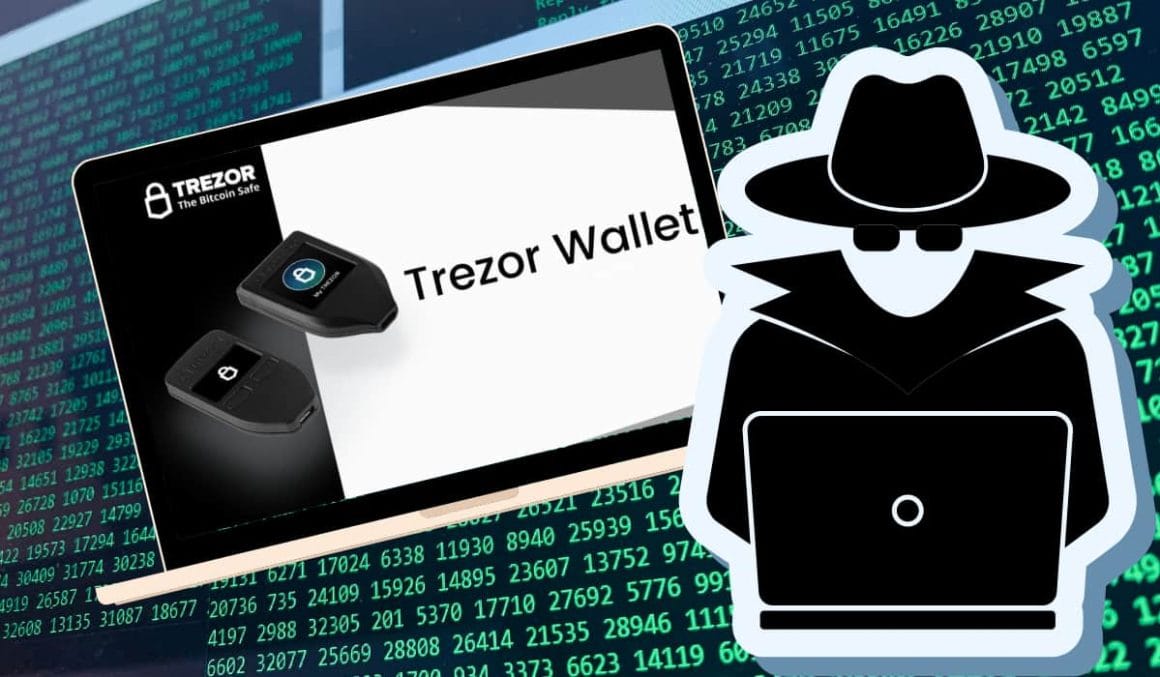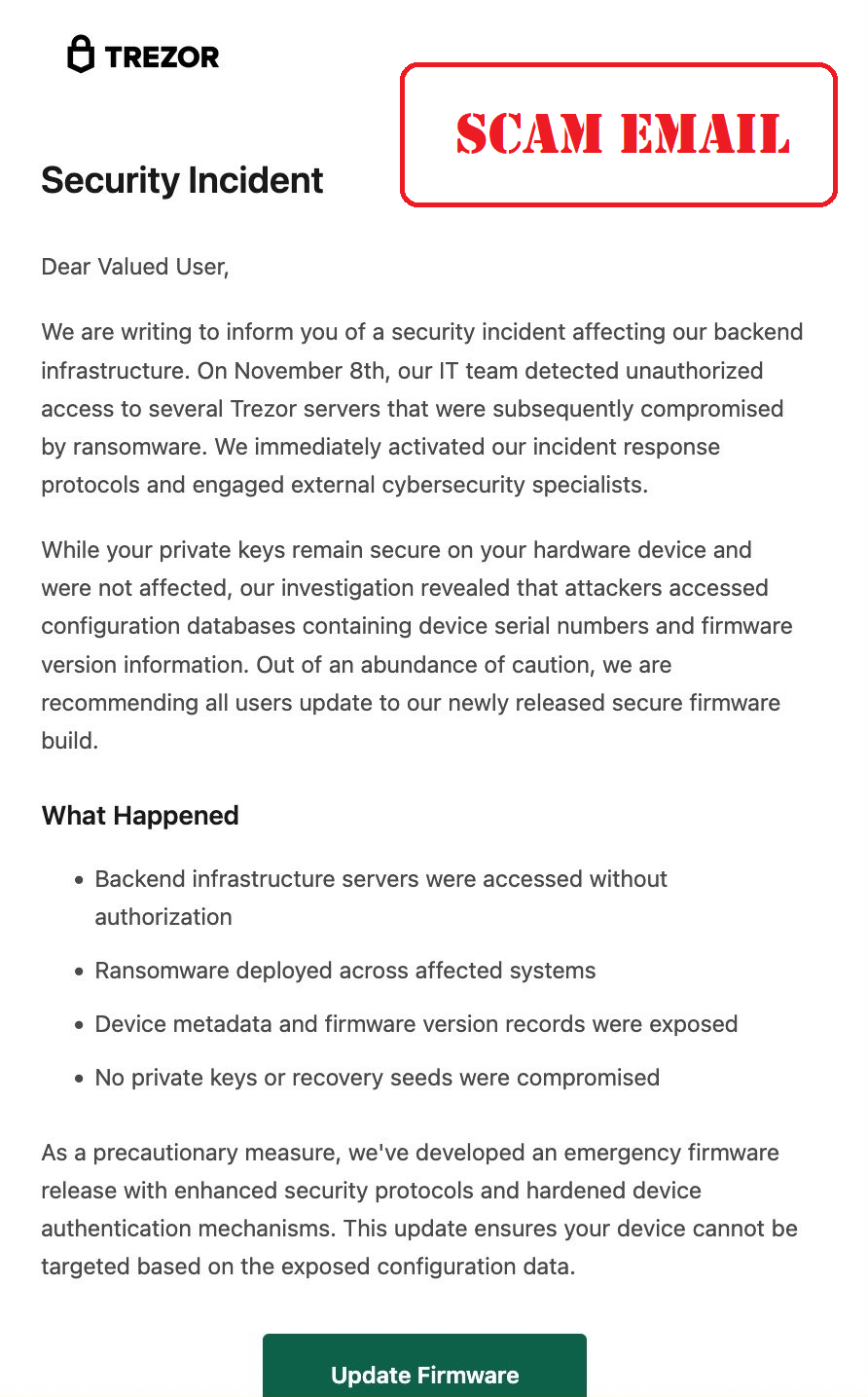Trezor Wallet Users Targeted as Phishing Threats Increase After Fake Firmware Emails

Phishing attacks disguised as urgent notifications from Trezor have surged in recent days, putting hardware wallet owners at greater risk of losing their crypto holdings. These deceptive emails claim a severe hack on Trezor's backend systems and demand immediate firmware updates to secure accounts. Security experts urge users to pause and verify any such messages before taking action, as the campaigns grow more sophisticated.
The emails typically arrive with a sense of urgency, warning of ransomware threats and corrupted firmware records that could wipe out wallet access. Recipients see a prominent button labeled "Update Firmware," which directs them to counterfeit websites built to capture sensitive recovery seeds or deploy malicious software. What makes these lures particularly dangerous is their polished appearance, complete with technical terms that mimic official communications from the company.

Trezor's Response and Historical Context
Trezor addressed the spike in attacks through a post on their X profile yesterday, clarifying that legitimate updates never require entering wallet backups on any device. The company stressed the importance of keeping recovery seeds entirely offline and away from digital interfaces, a core principle of hardware wallet security. This alert comes as phishing remains a persistent challenge in the crypto space, where attackers exploit trust in established brands to breach defenses.
Looking back, Trezor faced a similar but contained incident in June 2025, when hackers discovered a flaw in the company's website contact form. That vulnerability allowed spammers to send out bogus customer support emails, though the breach stopped short of accessing any user funds or seeds. Trezor swiftly patched the issue and reminded the community that support teams never solicit private keys through unsolicited messages, reinforcing their commitment to proactive transparency.
Another layer to these ongoing threats traces to an earlier compromise of Trezor's third-party email service, which exposed around 66,000 customer addresses in the prior year. While no financial data was stolen in that event, the leaked contacts have fueled a steady stream of personalized scams ever since. Attackers now craft messages tailored to individual users, blending stolen email details with timely hooks like firmware patches to heighten credibility and prompt hasty responses.
Users can sidestep these traps by adopting simple verification habits that prioritize direct access over email convenience. Start by navigating straight to the official Trezor website at https://trezor.io for any updates, bypassing links embedded in incoming mail entirely. Scrutinize sender domains closely, as genuine correspondence always originates from addresses tied to that domain, not unrelated services like restaurant chains, such as the recent scammer domain that was being sent out which was being sent from RedRobin.com, which has nothing to do with Trezor.
Maintaining the privacy of wallet recovery seeds forms the backbone of protection, where even minor slips can lead to irreversible losses. Store these wallet phrases on paper or metal backups in secure, offline locations, and resist the urge to input them anywhere online. When in doubt, forward suspicious emails to Trezor's security team at security@trezor.io for review, contributing to a collective shield against evolving tactics.
These incidents showcase the delicate balance between accessibility and safety in the crypto hardware wallet ecosystem, especially as adoption accelerates among everyday Bitcoin and crypto holders. Trezor continues to invest in user alerts and system hardening, but the human element remains key to outpacing crypto scammers and fraudsters. By staying informed and methodical, wallet owners not only safeguard their own assets but also help fortify the broader network against infiltration.
As cryptocurrency integrates deeper into daily finance, episodes like this serve as stark reminders of the vigilance required. Trezor's user base, drawn to the reliability of cold storage for assets like Bitcoin, faces heightened scrutiny from those seeking quick gains through deception. Forward-thinking practices, from routine email hygiene to community-shared intelligence, will define resilience in this space.

